


Robert Frank (1924 – 2019)
… it becomes indirectly an adaption of Ginsberg’s poem. And at the same time it is a film about Frank’s doubts about filming this. It sounds wild and it is. It is radical and most unique. Avant-garde and uncompromising, not as a stylistic or artistically experimental take, but because it is necessary for a purpose: a search for truth. (Sara Thelle)
THE PHENOMENON ROBERT FRANK
By Tue Steen Müller
1
I read somewhere that NYTimes plans to cut down in their movie reviews policy that so far has been working in the way that ALL films released theatrically in NY are reviewed. What that means remains to be seen, but it will not make me give up my subscription that includes the newspaper and the thursday/friday ”Movies Update” that is a pleasure to read for a documentary addict as well.
For instance the one from today: more documentaries are reviewed – and there is a long and informative, and superbly illustrated, article on the phenomenon Robert Frank, “The Man Who Saw America” (link) (Post 02-07-2015)
2
Calling all documentarians: Take a look at the NY Times site page that brings 11 of the photos that are exhibited at the Metropolitan Museum of Art in New York until January 3 2010.
Robert Frank is celebrated on the occasion of the 50th year of the publication of his classic ”The Americans”, the exemplary evidence of what a documentary interpretation of reality can be. In the review of the exhibition today in International Herald Tribune his work is characterized as an expression of ”mournful tenderness”.
Frank has been an inspiration for filmmakers all over the world. In Denmark the films of Jørgen Leth (”66 Scenes from America” and ”New Scenes from America”), to mention a couple that comes to my mind, would not be as they are if not for Frank. (link nytimes.com) (Post 29-09-2009)
3
Artistic repetitions and variations of the same theme in documentary films… Where do we find them? I had this thought when I watched Picasso. I thought of Jørgen Leth and his two America-films, “66 Scenes from America” and “New Scenes from America”. The camerawork of Dan Holmberg is in both cases much more linked to visual art than to narrative (literary) structures. I thought of Steen Møller Rasmussen, also a Danish documentarian, who has searched to catch New York, inspired heavily by Leth as a filmmaker and Robert Frank as a filmmaker and photographer. I thought of Sergey Dvortsevoy and his Russian images, full of atmospheres and different moods, as are the Danes I mention above. And as are Picasso´s variations. Could it be possible to talk more about film and (visual) art? (Post 13-10-2008)
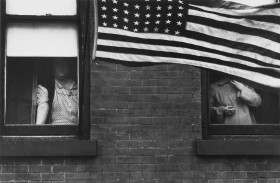
The Americans
IT SOUNDS WILD AND IT IS
By Sara Thelle
Thank you to Cinemateket in Copenhagen who, in collaboration with the Copenhagen Photo Festival and Danish writer, filmmaker and beat expert Lars Movin, organised the Robert Frank program here in June. And thank you to Lars Movin for sharing his knowledge and his personal anecdotes with us when introducing the films. This was the first big Robert Frank retrospective and also the first official screening of the legendary Rolling Stones documentary Cocksucker Blues (1972) on Danish ground. 15 of Robert Frank’s films and 3 about him.
I was in for a small marathon last Saturday. First the documentary Leaving Home, Coming Home – A Portrait of Robert Frank (2005) by Gerald Fox, a rare intimate portrait, since Robert Frank has never been keen to being filmed or interviewed. Then the feature-length hybrid film Me and My Brother (1968) and last, a collection of his later short films The Present (1996), I Remember (1998), Paper Route (2002), True Story (2004/2008) and Fernando (2008).
Me and My Brother was a slap in my face. It opens up with a very disturbing scene that takes you right to the bottom of a deep and complex matter. Soon it is turned into a film within the film and becomes a sort of meta-reflection and investigation into the questions: how do you film other people, how do you use others in your art, how do you use yourself, what do you make money from, how does it feel to be filmed, what does it do to you, when are you yourself and when are you acting. It is a hybrid film, mixing real life with staged acting, colour with black & white, at times the characters are “played” by themselves and at other moments by actors.
Originally, Frank was set out to make a film adapting Allen Ginsberg’s poem Kaddish, written about his mentally ill mother. But over time, the project becomes a film about Ginsberg’s partner Peter Orlovsky’s brother Julius, who after having spent 15 years in a psychiatric hospital is let out and left in care of his brother. So the setting is Julius, a catatonic schizophrenic, living with Peter Orlovsky and Allen Ginsburg. The film is about how to live with and among mental illness, about how the brother Peter deals with it, and in this way – maybe – it becomes indirectly an adaption of Ginsberg’s poem. And at the same time it is a film about Frank’s doubts about filming this.
It sounds wild and it is. It is radical and most unique. Avant-garde and uncompromising, not as a stylistic or artistically experimental take, but because it is necessary for a purpose: a search for truth.
Suisse photographer Robert Frank (born 1924) emigrated to America in 1947. He became friends with the Beat Generation and famous with the groundbreaking photographic book The Americans (1958). He then starts to make films. The short film Pull My Daisy (1959) is the first, written and narrated by Jack Kerouac.
Robert Frank uses himself in his work, but in a way where the private and personal never becomes confessional. His family plays an important role, his two children, Andrea and Pablo, in particular. He lost them both; Andrea died 20 years old in a plane crash in South America in 1974, Pablo, who suffered from schizophrenia, died in 1994. His later work explores the themes of loss, pain and memory, the past and the present.
Lars Movin used a Dylan-quote referring to Robert Frank setting aside all rules with Me and My Brother: “To live outside the law, you must be honest” (hinting that this is not always the case, especially nowadays). And honest is maybe the most precise word to describe this immense oeuvre that has now been opened up to me.
“It has to do with life more than with art” says Robert Frank himself in an interview in connection with his exhibition at the Jeu de Paume in Paris in 2009 https://www.youtube.com/watch?v=H6CVyWCVgFg
Cinemateket closed up for the summer showing Candy Mountain (1988), Robert Franks only feature-length fiction film made together with Rudy Wurlitzer. A perfect road-movie, pure joy and quite a bit of wisdom too…
If you can’t wait for the next retrospective, here are some shortcuts:
A great part of Robert Frank’s films, writings and photo books are edited by the distinguished German publisher Steidl. Among them Me and My Brother, a book with stills and dialogue and a DVD inside:
https://steidl.de/Books/Me-an-My-Brother-0409414457.html
Conversations in Vermont (1969), where Robert Frank visits his two children at their boarding school, is made available to the public online through the brilliant Internet Archive:
https://archive.org/details/cbpf_000051_p2#
Candy Mountain exists in a French DVD edition released by Blaq Out in 2013. Please check out the trailer, it’s a gem!:
https://www.youtube.com/watch?v=6pOu9piFAIg
http://www.blaqout.com/film/candy-mountain-2
(Post 26-06-2015)
DON’T BLINK: ROBERT FRANK (2015)
By Tue Steen Müller
A very nice email came in yesterday from New York from Laura Israel, who I met at IDFA in Amsterdam years ago. She told me that – as for decades editor and close collaborator of Robert Frank, and a director herself – she was wondering if a film about Robert Frank made by her would be interesting. Are you kidding, we want as much as possible on this great artist… what else could I have answered?
I am so happy to hear that the film, ”Don’t Blink: Robert Frank” is now finished and even more so, Laura Israel tells me that it has ”been selected to play in the New York Film Festival’s main slate this October”. The festival runs from September 25-October 11 and here is the description of the film from the festival site:
“The life and work of Robert Frank—as a photographer and a filmmaker—are so intertwined that they’re one in the same, and the vast amount of territory he’s covered, from The Americans in 1958 up to the present, is intimately registered in his now-formidable body of artistic gestures. From the early ’90s on, Frank has been making his films and videos with the brilliant editor Laura Israel, who has helped him to keep things homemade and preserve the illuminating spark of first contact between camera and people/places. Don’t Blink is Israel’s like-minded portrait of her friend and collaborator, a lively rummage sale of images and sounds and recollected passages and unfathomable losses and friendships that leaves us a fast and fleeting imprint of the life of theSwiss-born man who reinvented himself the American way, and is still standing on ground of his own making at the age of 90.” (Post 15-08-2015)
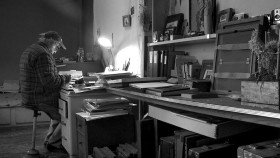
Don’t Blink: Robert Frank
THE FORM / THE COMPOSING / THE AESTETICS
By Tue Steen Müller
If you read the post ”Viktor Kossakovsky at IDFA” (link), you will discover his insisting on the form, on the composing of the image, on the aesthetics. If you want to see how this can be done, please go and see Laura Israel’s film ”Don’t Blink: Robert Frank” here at IDFA. It was screened at the Stedelijk Museum thursday night and is an excellent introduction to the now 91 year old legendary photographer and filmmaker made by his editor and collaborator in many films, a warm and generous portrait and a look into the creative process of a lovely man, a great artist, who has suffered personal tragedies in his life, that is very much present in his work, but who has also demonstrated how to catch moments in the lives of ”The Americans”, the title of his masterpiece. There was a retrospective of his work – and there is right now at IDFA, including his Rolling Stones film, ”Cocksucker Blues” – in Copenhagen, Sara Thelle wrote about it on this site and this blogpost. (Post 21-11-2015)
DON’T BLINK IN NEW YORK

I got an email from Laura Israel this morning, the director of the film on Robert Frank, with whom she has working for years as an editor. “Getting the Word Out” she wrote and told that the film is running at the wonderful New York cinema Film Forum July 13-26 = from tomorrow. Later today the producer Melinda Shopsin posted a reference to an enthusiastic review of the film by Matthew Eng, Tribecafilm.com. It deserves a quote, see below and remember that we have several texts on Frank on this site. I also want to recommend the website of the film.
“…Don’t Blink is the rare documentary — and Israel the rare documentarian-cum-cinematic curator — that understands that the best way to elicit both appreciation and understanding for an artist’s creations is to allow us to see these creations first-hand. And when the creations in-question are as electrifying and contextually-profuse as Frank’s, it’s especially hard to look away. His famously era-specific photography is so striking in the direct spontaneity of its gritty Americana, the scattered snippets of his films so arresting in their shaggy ecstasy, that as each of his works slips and seeps into one another, one can’t help but struggle to keep up…
http://www.dontblinkrobertfrank.com (Post 12-07-2016)
ME AND MY BROTHER
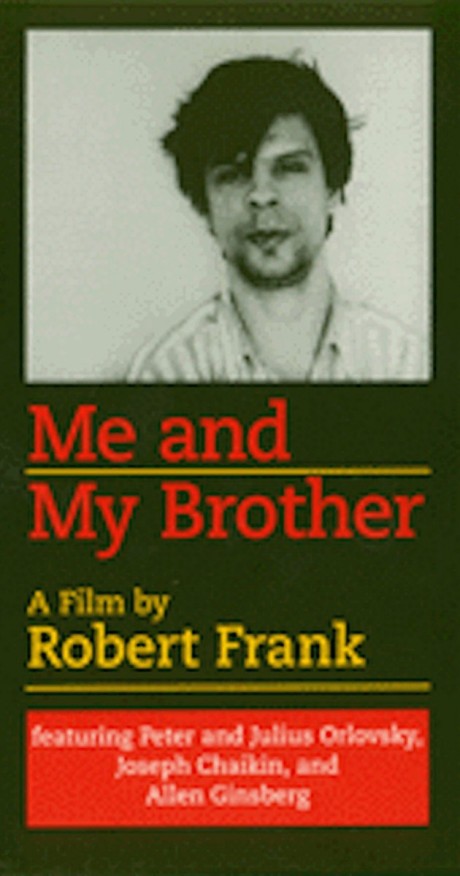
The editors of this site, Tue Steen Müller and Allan Berg, met in Randers where Berg lives. It is a tradition that we watch films together, when we meet and as Berg had a fine script publication of Robert Frank’s “Me and My Brother” including a dvd with the film, this was an obvious choice. The famous publisher Steidl is behind the publication that was given to Berg by Sara Thelle, who in 2015 wrote about the film after a retrospective of Frank’s film at the Cinemateket in Copenhagen:
Me and My Brother was a slap in my face. It opens up with a very disturbing scene that takes you right to the bottom of a deep and complex matter. Soon it is turned into a film within the film and becomes a sort of meta-reflection and investigation into the questions: how do you film other people, how do you use others in your art, how do you use yourself, what do you make money from, how does it feel to be filmed, what does it do to you, when are you yourself and when are you acting. It is a hybrid film, mixing real life with staged acting, colour with black & white, at times the characters are “played” by themselves and at other moments by actors.
Originally, Frank was set out to make a film adapting Allen Ginsberg’s poem Kaddish, written about his mentally ill mother. But over time, the project becomes a film about Ginsberg’s partner Peter Orlovsky’s brother Julius, who after having spent 15 years in a psychiatric hospital is let out and left in care of his brother. So the setting is Julius, a catatonic schizophrenic, living with Peter Orlovsky and Allen Ginsberg. The film is about how to live with and among mental illness, about how the brother Peter deals with it, and in this way – maybe – it becomes indirectly an adaption of Ginsberg’s poem. And at the same time it is a film about Frank’s doubts about filming this.
It sounds wild and it is. It is radical and most unique. Avant-garde and uncompromising, not as a stylistic or artistically experimental take, but because it is necessary for a purpose: a search for truth…
USA, 1968, 85 mins.
http://www.filmkommentaren.dk/blog/blogpost/3200/
http://www.filmkommentaren.dk/blog/blogpost/3392/ (Post 28-04-2018)
A BRILLIANT CONVERSATION
by Tue Steen Müller
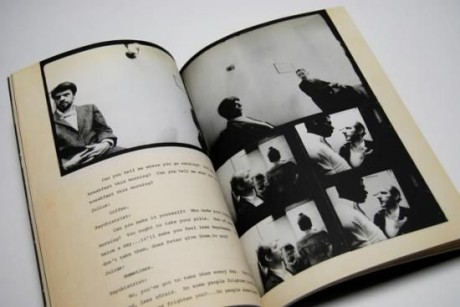
In the blogpost below you find a text of what Allan Berg and I did the other day: Watched the film by Robert Frank from 1968, with a quote from the text of Sara Thelle, when she saw the film three years ago. We also referred to the fine Steidl publication of the script. After a closer look at that we found that the fascinating ending of the film includes a brilliant conversation between Frank, the director and Julius Olovsky, the man who after many years is released from a state institution to be taken care of by his brother Peter. In the following we present the two final pages of the script that indeed is about making films, about acting, and about the camera and what it can represent:
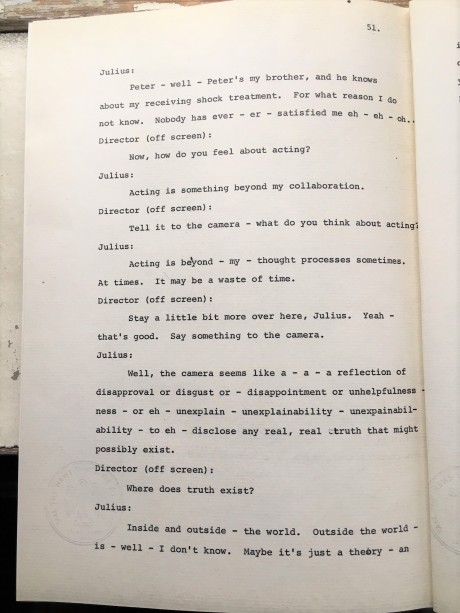
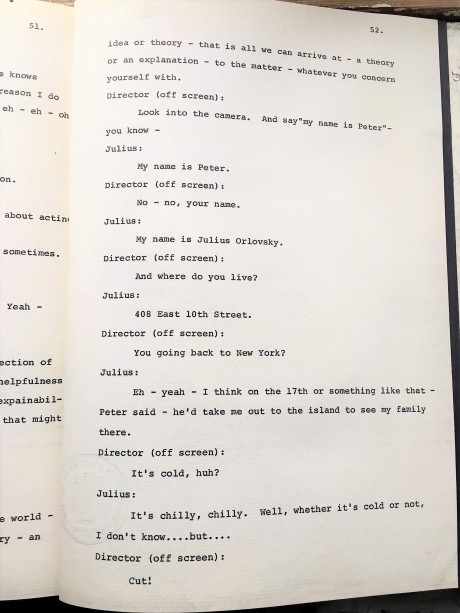
Photos: Steidl and Maria Briese
FOTO (ved overskriften)
Barry Kornbluh: Robert Frank indstiller (uden for billedrammen) sit kamera. Kornbluh fortæller på sin hjemmeside om optagelserne, hvoraf denne er en:
http://www.barrykornbluh.nl/Robert%20Frank/Robert%20Frank.html